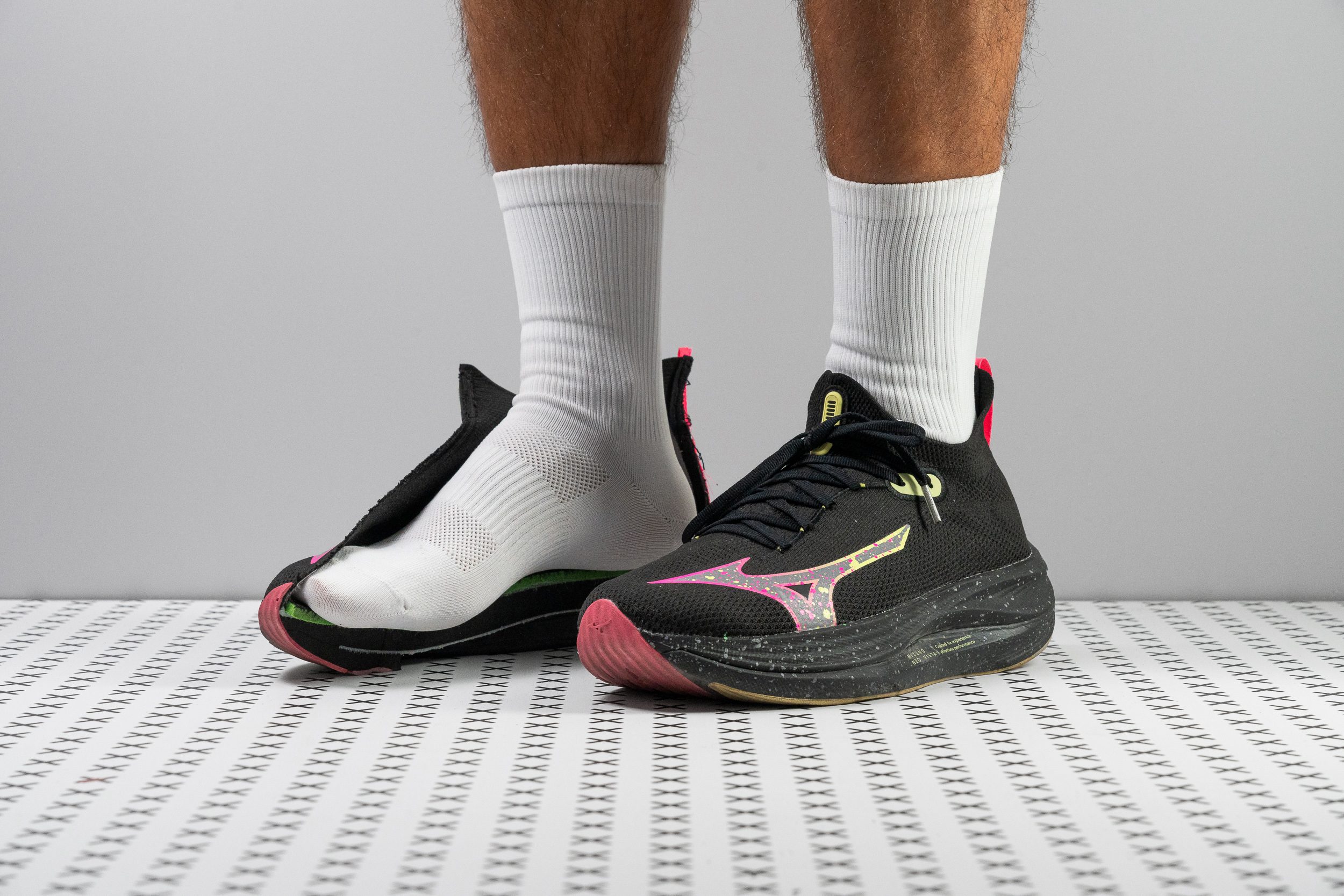Our verdict
Pros
- Exceptional all-around durability
- Comfortable, plush midsole
- Endless cushioning
- Reliable traction
- Versatile
- Flexible despite huge stack
- Well-designed rocker
- Stretchy knit upper
- Big reflective Mizuno logo
- Big reflective Mizuno logo
Cons
- Limited heel stability
- Rock-catching outsole
- Overheats in summer
- Not enough energy return
Audience verdict
- Top 7% in road running shoes
- Top 10% in Mizuno running shoes
- Top 29% most popular running shoes
Comparison
The most similar running shoes compared
+ + Add a shoe | |||||
|---|---|---|---|---|---|
| Audience score | 91 Superb! | 91 Superb! | 91 Superb! | 83 Good! | |
| Price | £150 | £170 | £165 | £150 | |
| Pace | Daily runningTempo | Daily running | Daily running | Daily runningTempo | |
| Shock absorption | High | High | High | High | |
| Energy return | Moderate | Moderate | Moderate | Moderate | |
| Traction | Moderate | High | Moderate | High | |
| Arch support | Neutral | Neutral | Neutral | Neutral | |
| Weight lab Weight brand | 9.1 oz / 259g 9.4 oz / 266g | 10.3 oz / 291g 10.3 oz / 292g | 9.6 oz / 271g 9.8 oz / 277g | 9.3 oz / 264g 9.4 oz / 266g | |
| Drop lab Drop brand | 9.6 mm 8.0 mm | 9.6 mm 8.0 mm | 10.0 mm 8.0 mm | 8.5 mm 8.0 mm | |
| Strike pattern | HeelMid/forefoot | HeelMid/forefoot | HeelMid/forefoot | HeelMid/forefoot | |
| Size | True to size | True to size | True to size | Half size large | |
| Midsole softness | Soft | Soft | Soft | Soft | |
| Difference in midsole softness in cold | Small | Big | Normal | Small | |
| Toebox durability | Good | Decent | Good | Good | |
| Heel padding durability | Good | Decent | Good | Good | |
| Outsole durability | Good | Decent | Bad | Good | |
| Breathability | Moderate | Moderate | Moderate | Moderate | |
| Width / fit | Medium | Medium | Medium | Medium | |
| Toebox width | Medium | Medium | Medium | Medium | |
| Stiffness | Moderate | Stiff | Moderate | Moderate | |
| Torsional rigidity | Stiff | Stiff | Moderate | Stiff | |
| Heel counter stiffness | Flexible | Moderate | Moderate | Flexible | |
| Rocker | ✓ | ✓ | ✗ | ✓ | |
| Heel lab Heel brand | 44.9 mm 44.5 mm | 42.9 mm 47.0 mm | 40.7 mm 42.0 mm | 46.0 mm 44.5 mm | |
| Forefoot lab Forefoot brand | 35.3 mm 36.5 mm | 33.3 mm 39.0 mm | 30.7 mm 34.0 mm | 37.5 mm 36.5 mm | |
| Widths available | Normal | Normal | NormalWide | NormalWide | |
| Orthotic friendly | ✓ | ✓ | ✓ | ✓ | |
| Season | All seasons | All seasons | All seasons | All seasons | |
| Removable insole | ✓ | ✓ | ✓ | ✓ | |
| Ranking | #35 Top 6% | #32 Top 9% | #25 Top 7% | #272 Bottom 27% | |
| Popularity | #187 Top 29% | #136 Top 37% | #207 Bottom 44% | #65 Top 18% |
Who should buy
We've put the Neo Vista through rigorous tests in the lab to determine if it lives up to the hype. In our view, it's:
- Perfect for runners seeking a high-stack supertrainer that combines comfort and performance.
- Ideal for those seeking a tempo trainer with a plush midsole, suitable for easy runs and fast-paced workouts alike.
- Recommended for fans of stretchy, sock-like knit uppers.
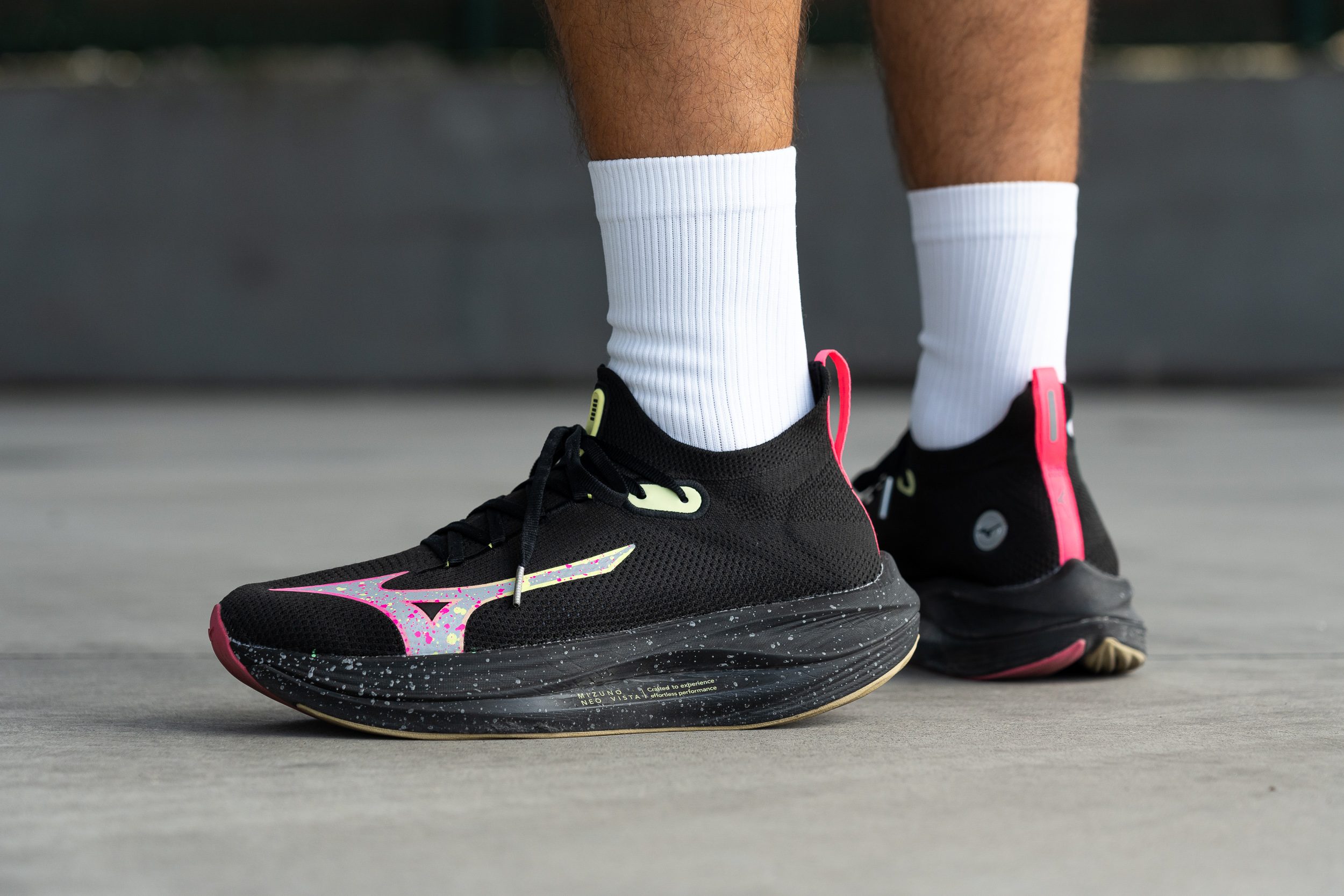
Who should NOT buy
While a sock-like upper boasts many advantages, we must acknowledge its drawbacks, primarily the decreased breathability and less effective heel lockdown. If these are concerns for you, consider the Saucony Endorphin Speed 4 or the New Balance SC Trainer v3, which significantly enhance these areas at a similar price point.
Additionally, the Neo Vista falls slightly short on energy return. While the ENERZY NXT foam performs admirably for being an EVA-based foam, it lags behind market leaders like FF Turbo+ or Lightstrike Pro. For those prioritising top-tier energy return, we recommend the ASICS Superblast 2 or the Adidas Adizero Prime X 2 Strung, if your budget allows.
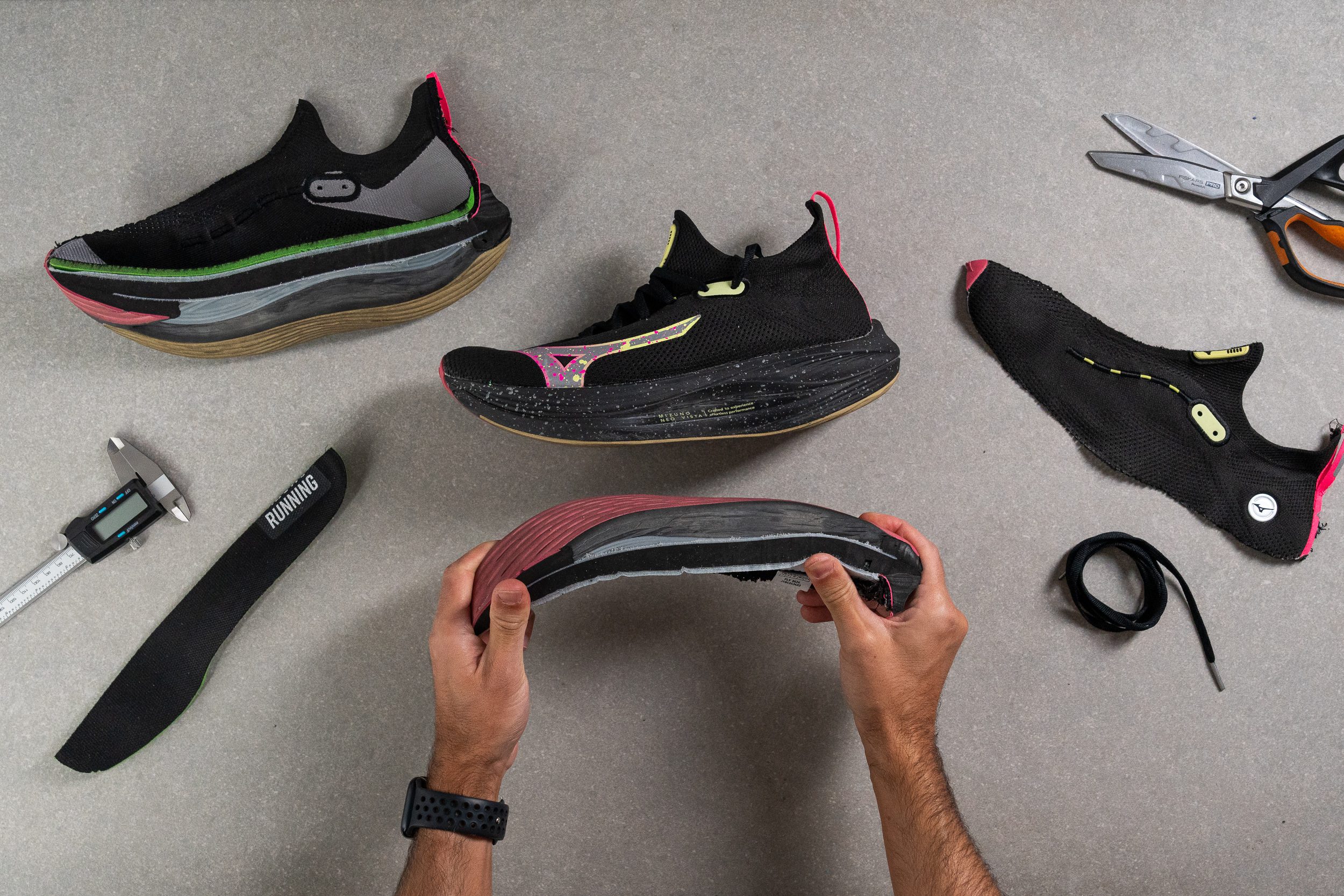
Cushioning
Shock absorption
We discovered that the Mizuno Neo Vista ranks as the most heavily-cushioned heel we’ve ever tested at the time of its lab review. Its terrific 163 SA of cushioning is flat-out massive and guarantees a zero-ground-contact feel, for better or worse.
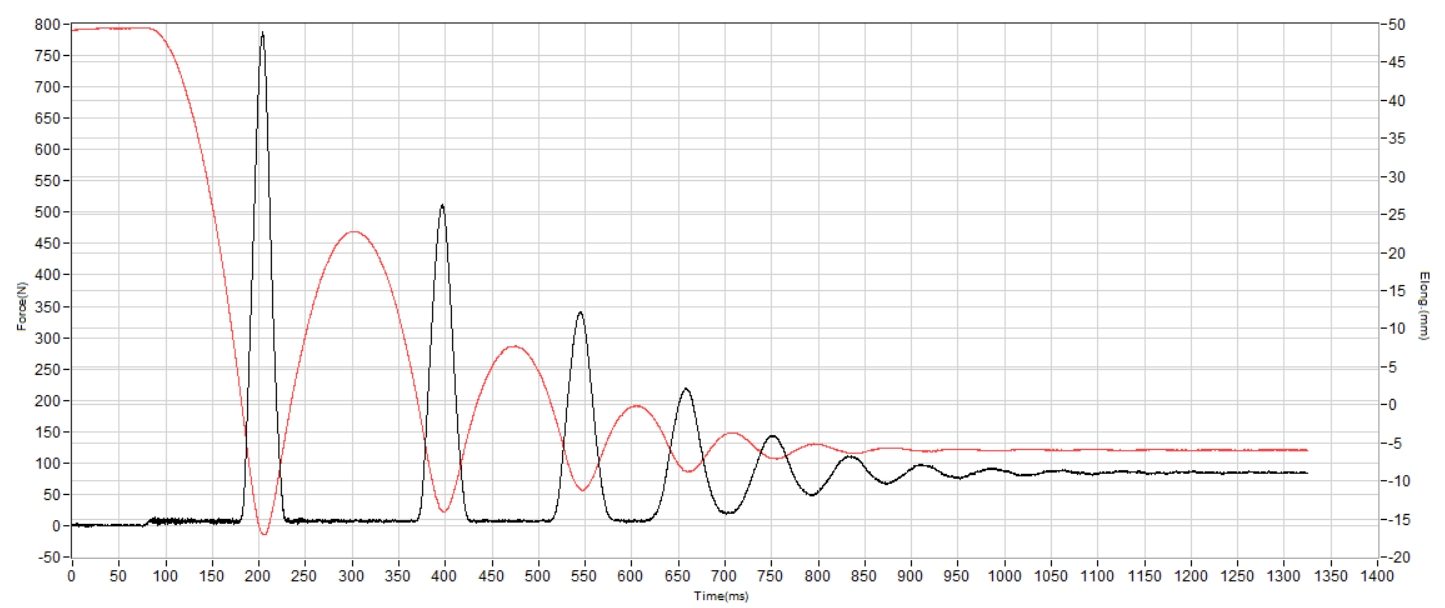
| Neo Vista | 163 SA |
| Average | 129 SA |
Energy return
However, while shock absorption was sky-high, energy return turned out to be underwhelming. Mizuno hyped this shoe as a super-bouncy daily trainer, claiming their EVA was on another level. Sure, it feels livelier than a cheap EVA, but 56.9% is a plain-and-simple result that doesn’t match the bold marketing.
| Neo Vista | 56.9% |
| Average | 58.5% |
Heel stack
We hinted at the stack height of the Neo Vista, but it wasn't until we used our callipers that we confirmed its exceptional measurement. After evaluating hundreds of shoes in the lab, this one stands out in the top 5% for heel stack height.
Runners seeking ample cushioning will find this model particularly appealing. Even those with heavier builds can enjoy the plush foam without the risk of bottoming out, guaranteed.
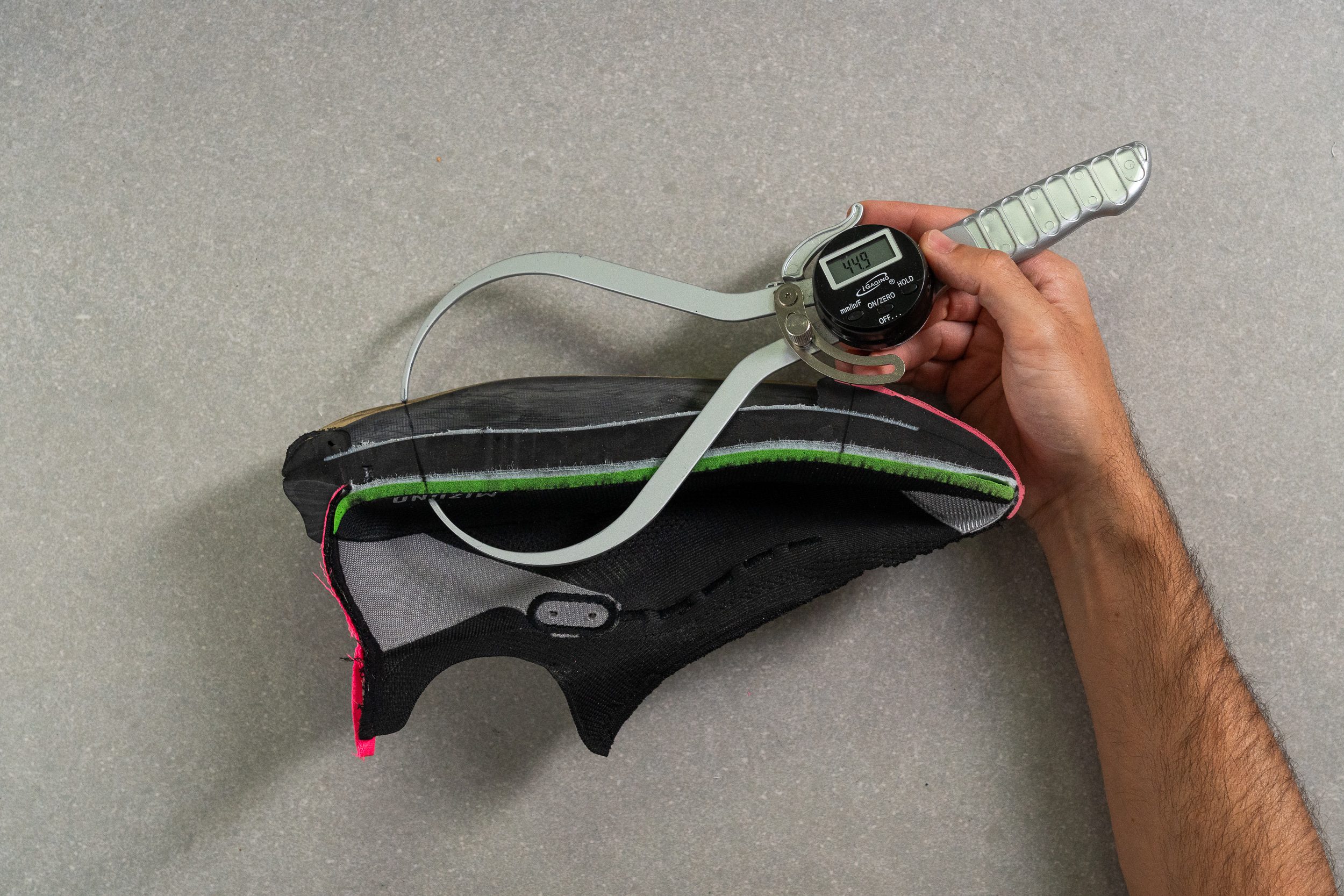
| Neo Vista | 44.9 mm |
| Average | 34.8 mm |
Forefoot stack
As you might expect, the forefoot is also exceptionally cushioned. Remarkably, at 35.3 mm, it matches what is typically seen in the heel of many running shoes!
This feature makes the shoe particularly appealing to forefoot and midfoot strikers who appreciate abundant foam underfoot or those seeking maximum leg protection for longer distances.
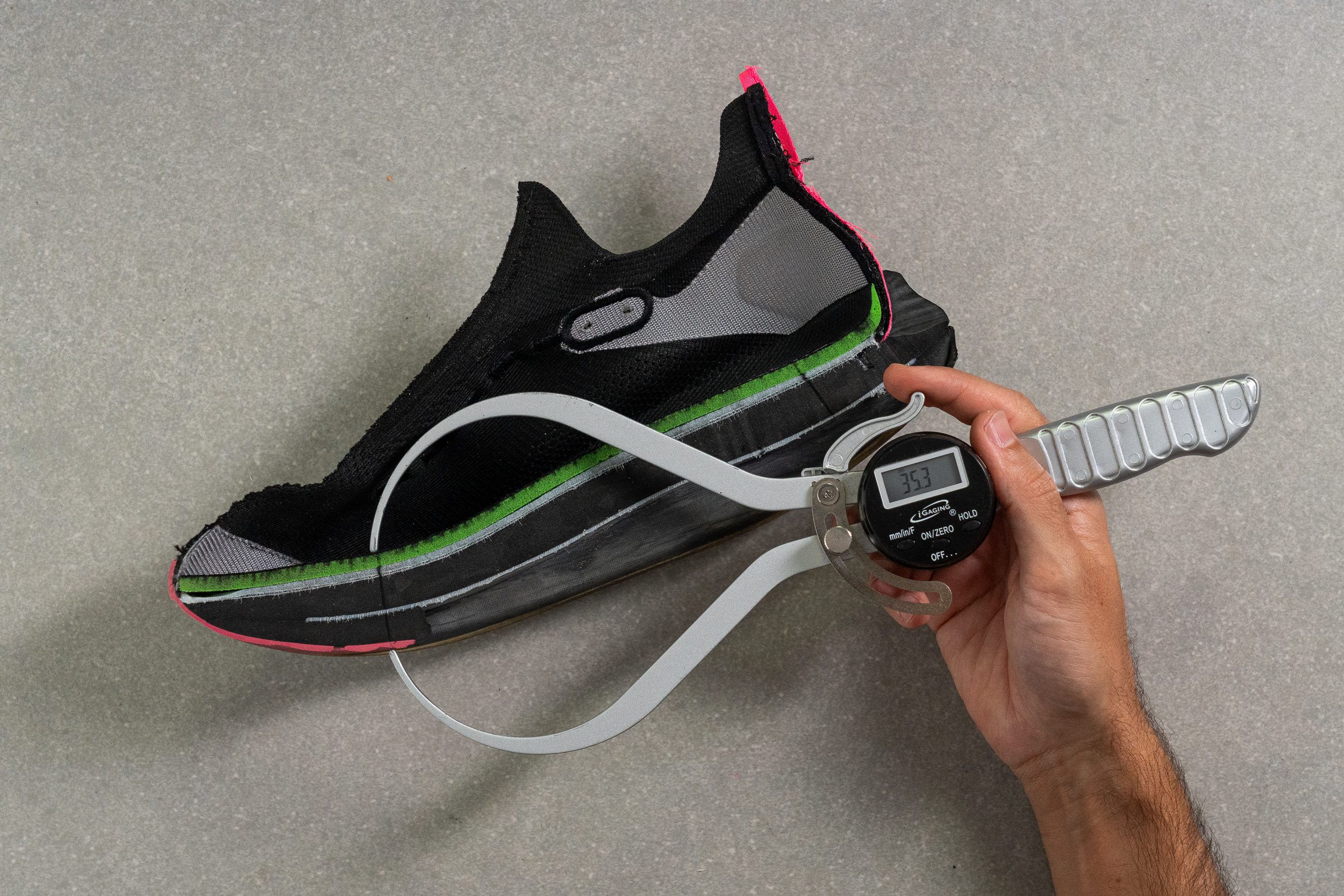
| Neo Vista | 35.3 mm |
| Average | 26.2 mm |
Drop
Mizuno advertises an 8-mm drop for this shoe, but our measurements showed a slight increase to 9.6 mm—a minor difference that’s typically unnoticeable. Additionally, it's worth noting that the softness of the ENERZY NXT foam means the perceived drop can vary significantly during a run, depending on your foot strike.

| Neo Vista | 9.6 mm |
| Average | 8.6 mm |
Midsole softness
Mizuno has introduced a brand-new foam with this shoe, dubbed ENERZY NXT, which ranks among the top EVA-based foams currently available when it comes to energy return.
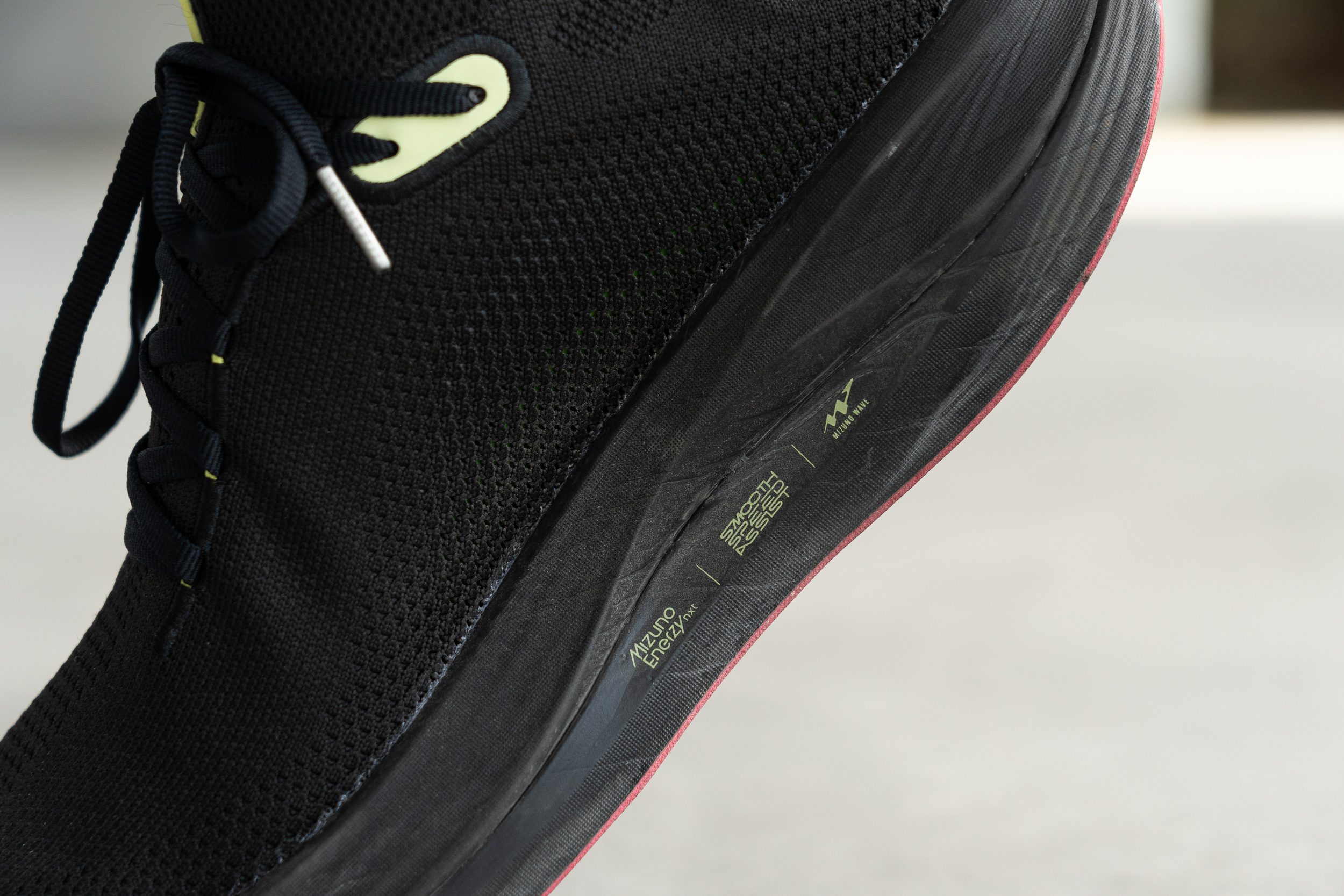
It offers a bouncy, elastic, and exceptionally plush ride (15.6 HA), a notable achievement especially considering our usual expectations of moderate-to-low energy return from EVA materials. That said, it's still clearly below the best-in-class PEBA foams.
How did our friends in Osaka manage this? We don't really know, as Mizuno keeps the specifics of their foam formulations under wraps. But our microscopic examination of ENERZY NXT revealed that this foam is not supercritical, which came as a surprise to us.

Unlike the uniform, bubble-like cells typical of nitrogen-infused supercritical foams, ENERZY NXT features an irregular, open-cell structure. And hey, if you want to delve deeper, we got you covered with our advanced guide about foams.

| Neo Vista | 15.6 HA |
| Average | 20.4 HA |
Secondary foam softness
Despite having over 40 mm of stack height and a plate, this shoe is surprisingly flexible, as confirmed by our flexibility test with a score of 24.9N.
This flexibility is due to the nylon plate, which, unlike stiffer materials like carbon fibre, adds a touch of pop without making the shoe too aggressive, as we've observed in other tempo shoes.
Rocker
Mizuno has implemented a more subtle version of their Smooth Speed Assist technology in this shoe, similar to what we saw in the high-end Wave Rebellion Pro 2, but tailored for slower paces and training purposes.
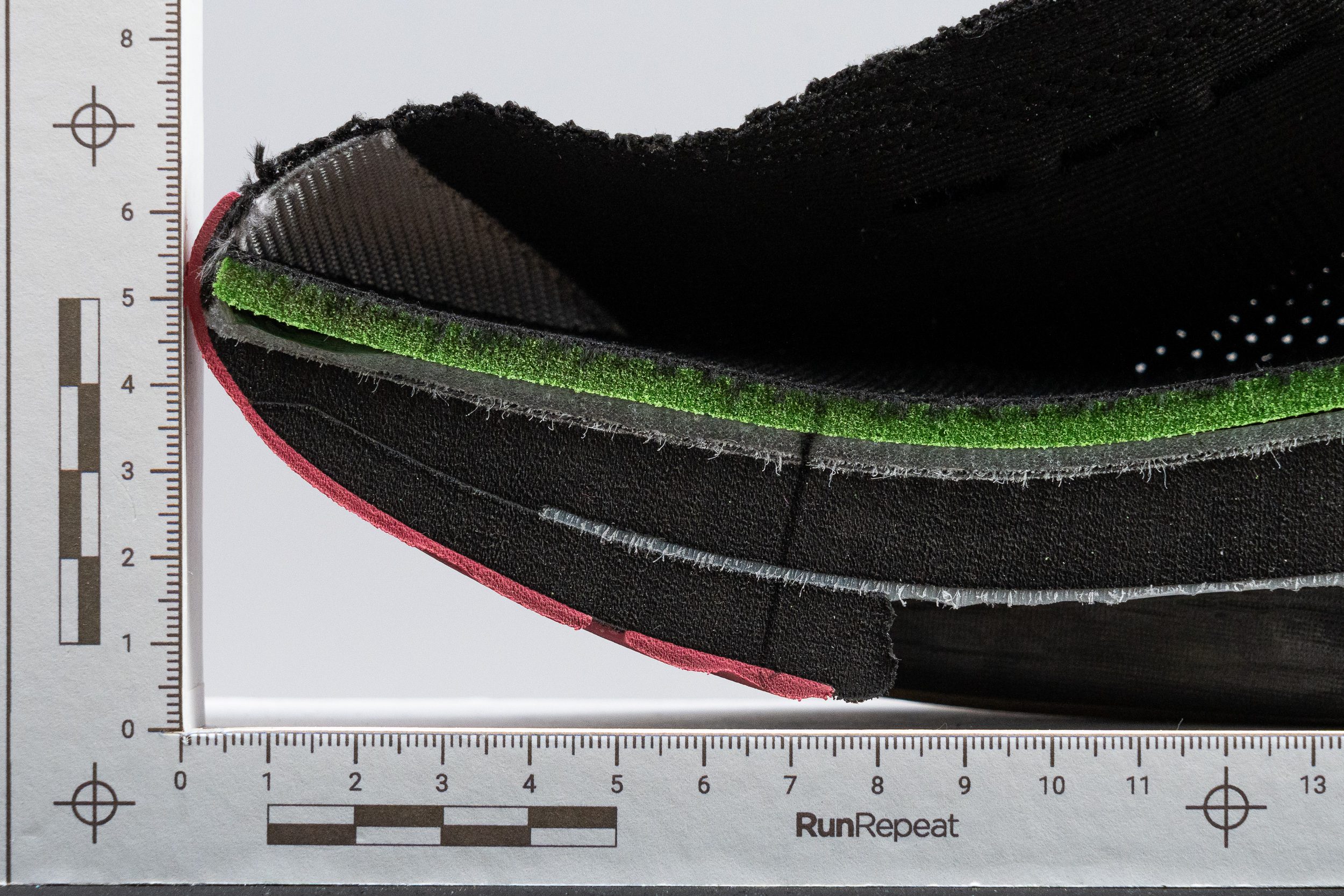
The toe spring is gentle yet effective, offering a continuous, progressive curvature across the entire midsole. This early-rocker design greatly facilitates turnover, especially with the shoe's significant stack height.
Size and fit
Size
Mizuno Neo Vista fits true to size (62 votes).
Width / Fit
We began our assessment of the Neo Vista by creating a gel mould of its interiors. While the mould has a jelly-like appearance—tempting when hungry—it’s sadly not edible!
After testing, we discovered a narrow measurement of 93.8 mm. However, in our experience, the shoe's knit upper is so stretchy and comfortable that it felt like an average daily trainer, offering a slightly wider fit than the measurement suggests.

| Neo Vista | 93.8 mm |
| Average | 95.1 mm |
Toebox width
The toebox doesn’t taper much at 74.6 mm, and features a slightly rounded shape that, combined with the highly-stretchy knit upper, creates an accommodating fit. In our experience, this makes the Neo Vista an excellent choice for long runs.
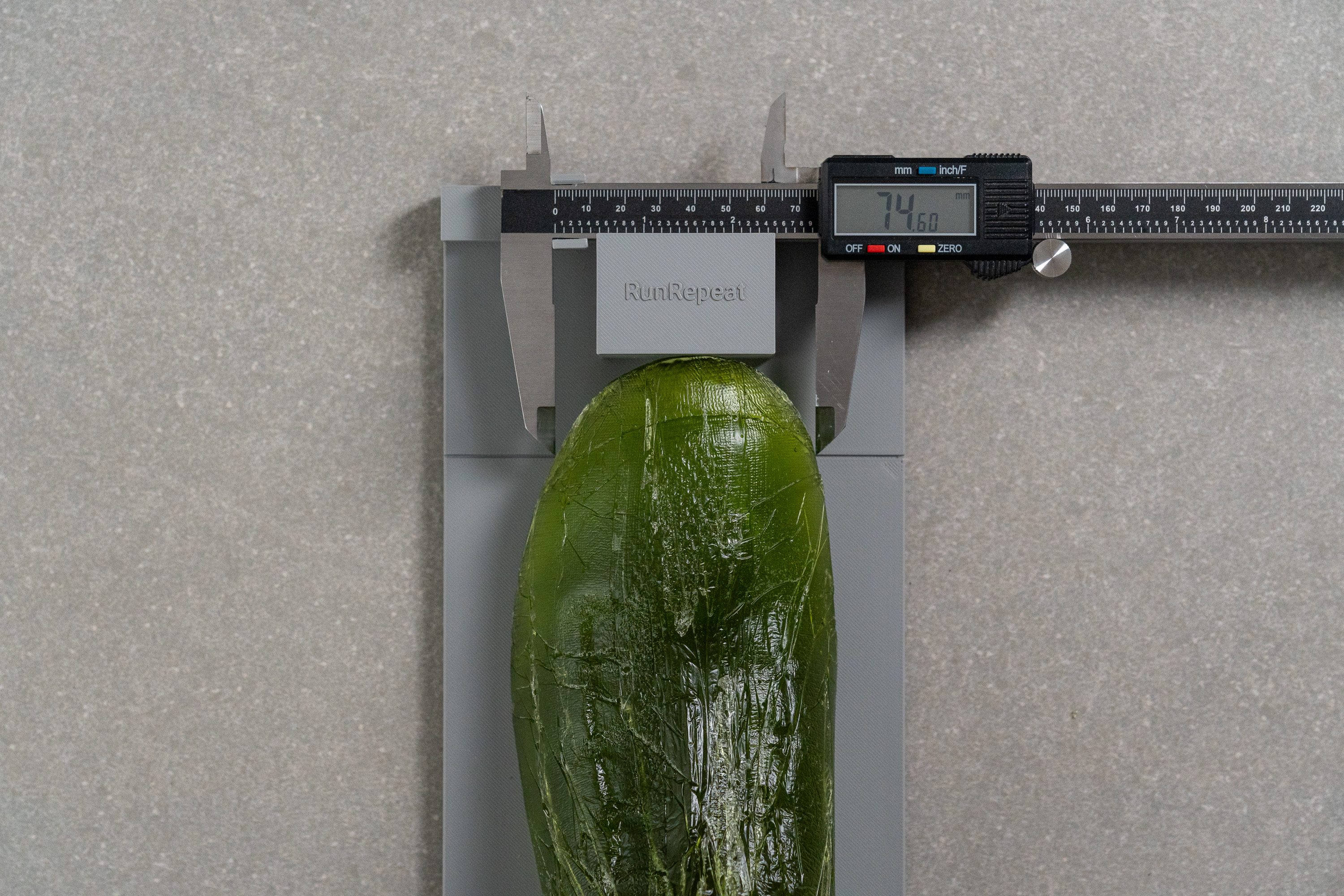
| Neo Vista | 74.6 mm |
| Average | 73.2 mm |
Toebox height
The toebox's vertical volume (25.7 mm) can feel a bit snug for those with big feet, possibly causing pressure on the toes and instep.
However, the impressive flexibility and stretchiness of the knit upper compensate for this, making the Neo Vista a great choice for runners who appreciate slight toe pressure for a secure feel, especially during faster runs.
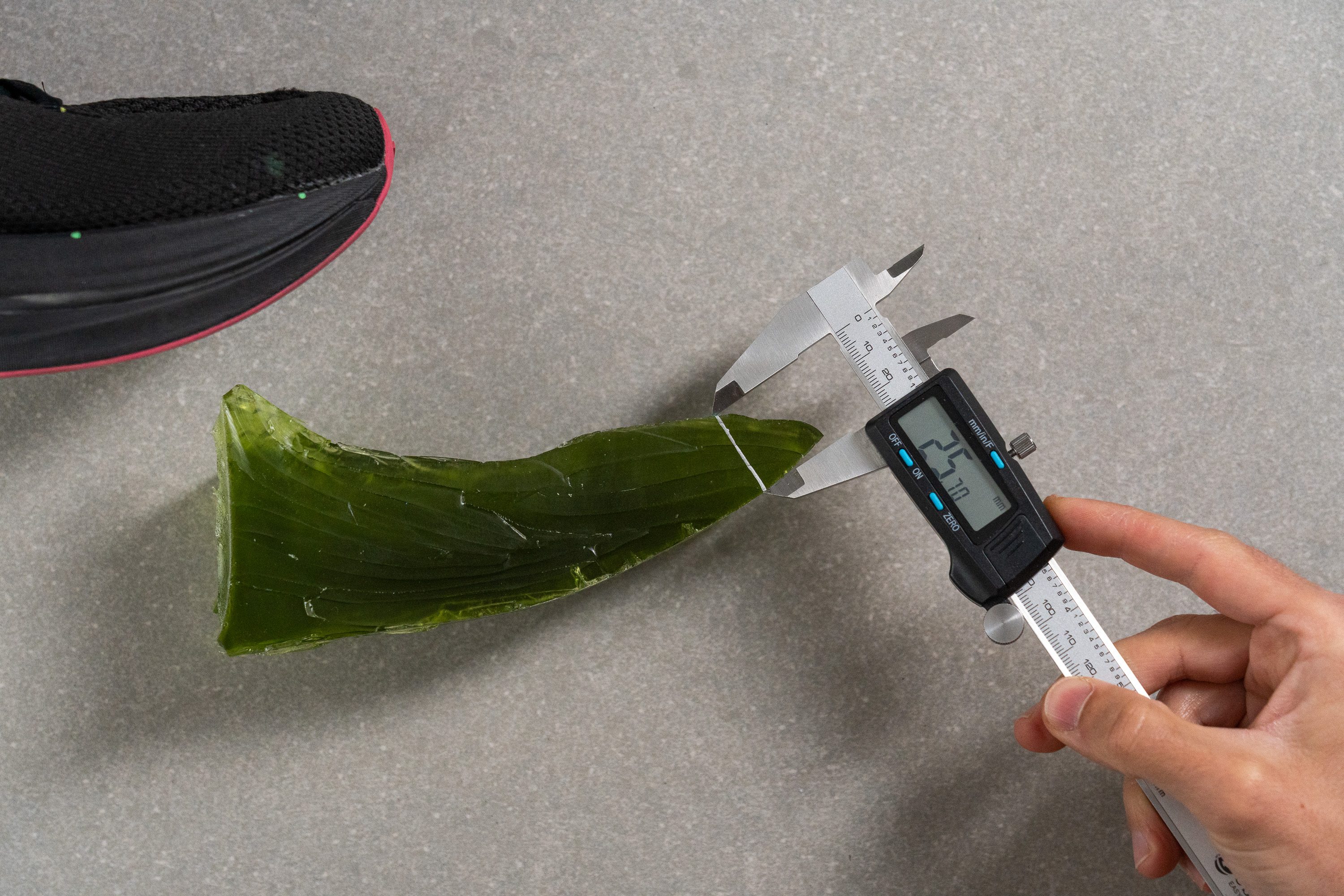
| Neo Vista | 25.7 mm |
| Average | 27.1 mm |
Traction / Grip
Traction test
Despite its very soft nature, we found that the shoe's G3 Rubber has a fairly standard road shoe traction. This was confirmed by our SATRA TM144 grip test which showed a friction score of 0.41.
But even though the coefficient is below the average, you can expect a surefooted grip on both dry and wet surfaces in the Mizuno Neo Vista.
| Neo Vista | 0.41 |
| Average | 0.48 |
Outsole design
We found the outsole mirrors Mizuno’s current design language, just like in the Neo Zen, using a sculpted layout that strips away excess rubber for a more race-ready feel.
At the centre, a large cutout reveals the plate. This helps to trim weight but comes with trade-offs. Grip on wet pavement is not stellar, and the exposed-plate zone won’t handle rough terrain or sharp rocks as well as more rugged outsoles.
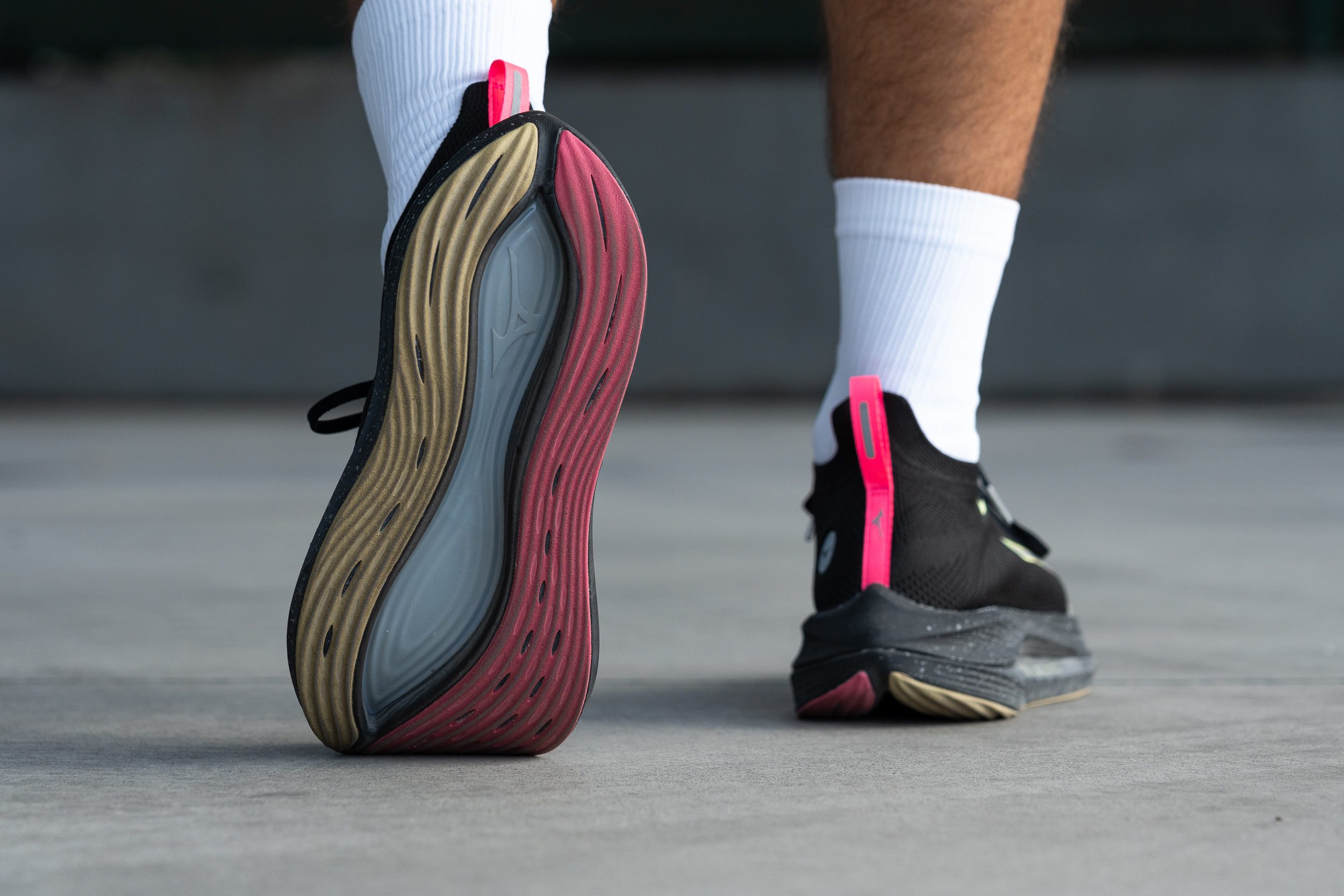
Flexibility / Stiffness
Despite having over 40 mm of stack height and a plate, this shoe is surprisingly flexible, as confirmed by our flexibility test with a score of 16.2N.
This flexibility is due to the nylon plate, which, unlike stiffer materials like carbon fibre, adds a touch of pop without making the shoe too aggressive, as we've observed in other tempo shoes.
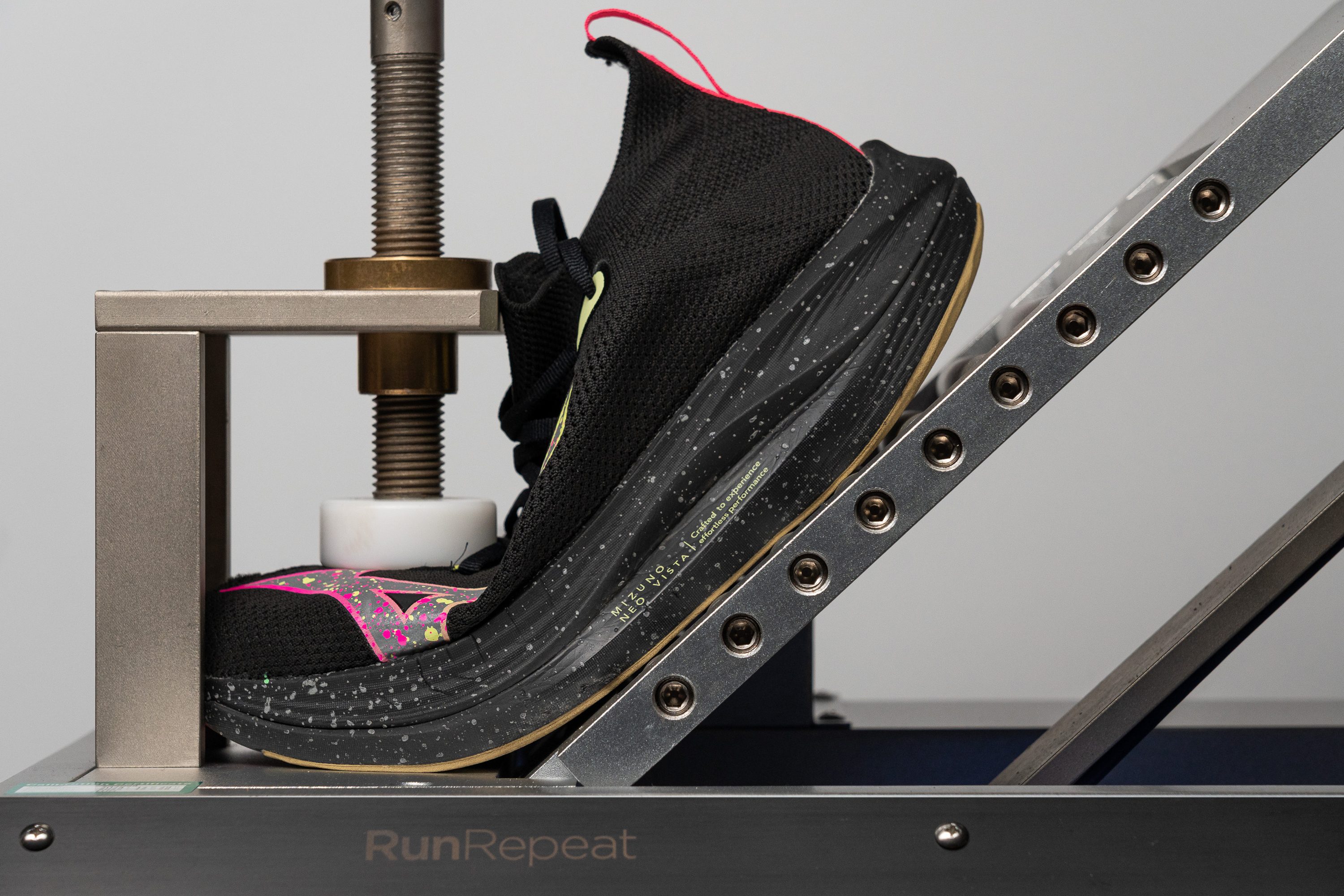
| Neo Vista | 16.2N |
| Average | 15.3N |
Stiffness in cold (%)
We exposed the shoe to another round of cold-weather simulations by placing it in the freezer for 20 more minutes before performing the 90-degree bend test a second time. Here we found an uptick of 35%, which is similar to the average and consistent with EVA foam.
| Neo Vista | 35% |
| Average | 33% |
Plate
Nestled between two layers of foam in this shoe is Mizuno's Wave Plate, a plant-based Rilsan plate primarily used for stabilisation rather than adding stiffness, as confirmed by our 90-degree bending test.

While the shoe does include a plate, it feels significantly different from those with a carbon plate, offering minimal longitudinal stiffness. This flexibility makes the shoe well-suited for slower-paced running.
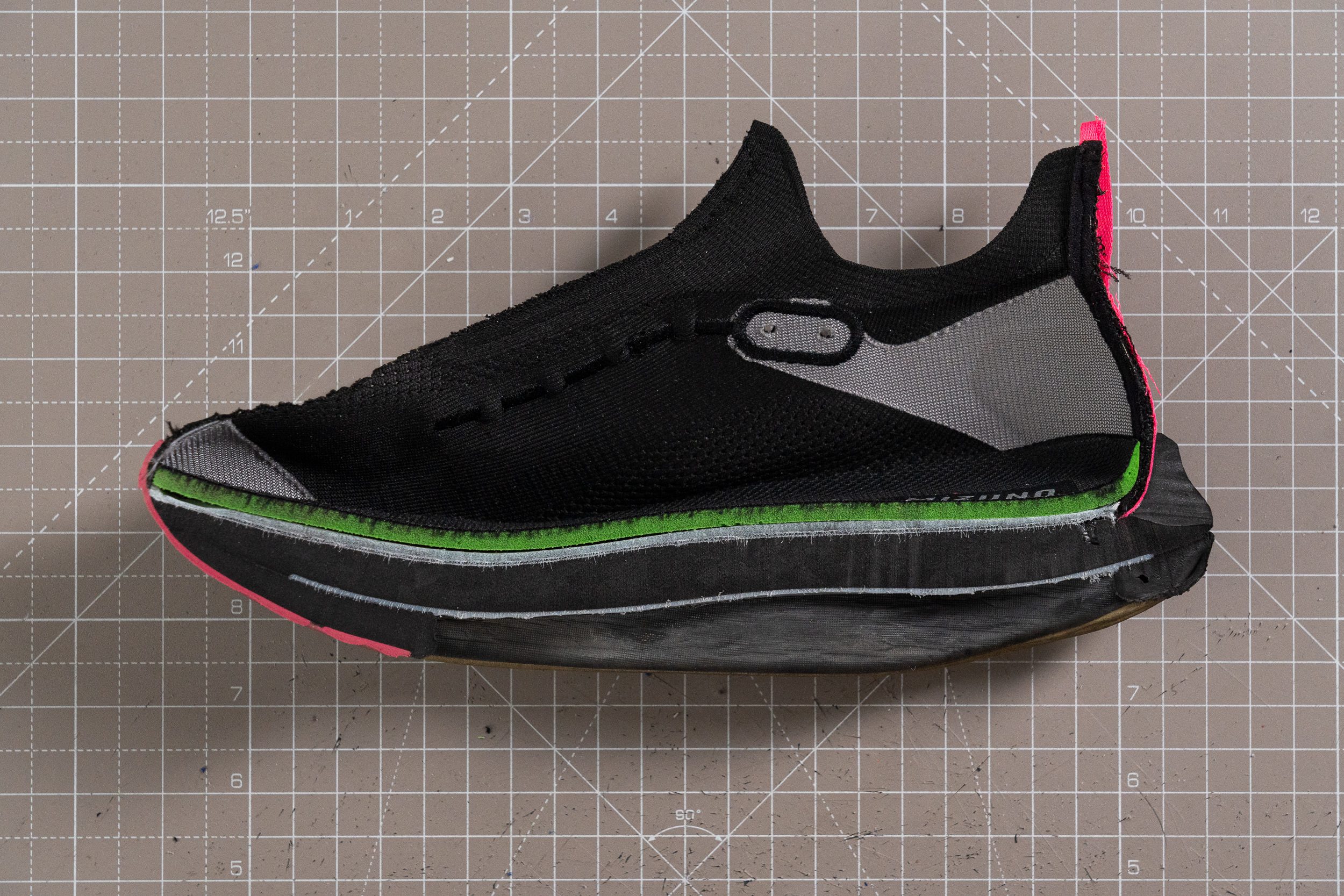
Weight
We discovered that the Neo Vista weighs an impressive 9.1 oz or 259g, which is outstanding for a shoe with over 40 mm stack height.
How did Mizuno achieve this? A combination of design strategies contributed, including the outsole cutout, the use of airy, super-light foam, and lightweight upper materials. And while this shoe is tailored for training rather than racing, its near-9-ounce weight is a welcome feature!

| Neo Vista | 9.1 oz (259g) |
| Average | 9.3 oz (264g) |
Breathability
While knit uppers offer increased comfort and stretchiness, they often fall short in breathability compared to mesh uppers, as the knit yarns tend to be thicker. In our initial assessment of the Neo Vista, we found airflow somewhat limited, rating it a 3 out of 5 on our scale, which is below average for road running shoes.
It doesn't completely rule out the shoe for summer use, but runners training in extremely hot climates should consider this. However, in cooler seasons, it performs awesome, and it's great for winter.
Our light testing revealed some ventilation in the medial side and toebox, yet it wasn't enough to score higher. The ventilation holes in the medial part do offer some relief by helping to dissipate heat.
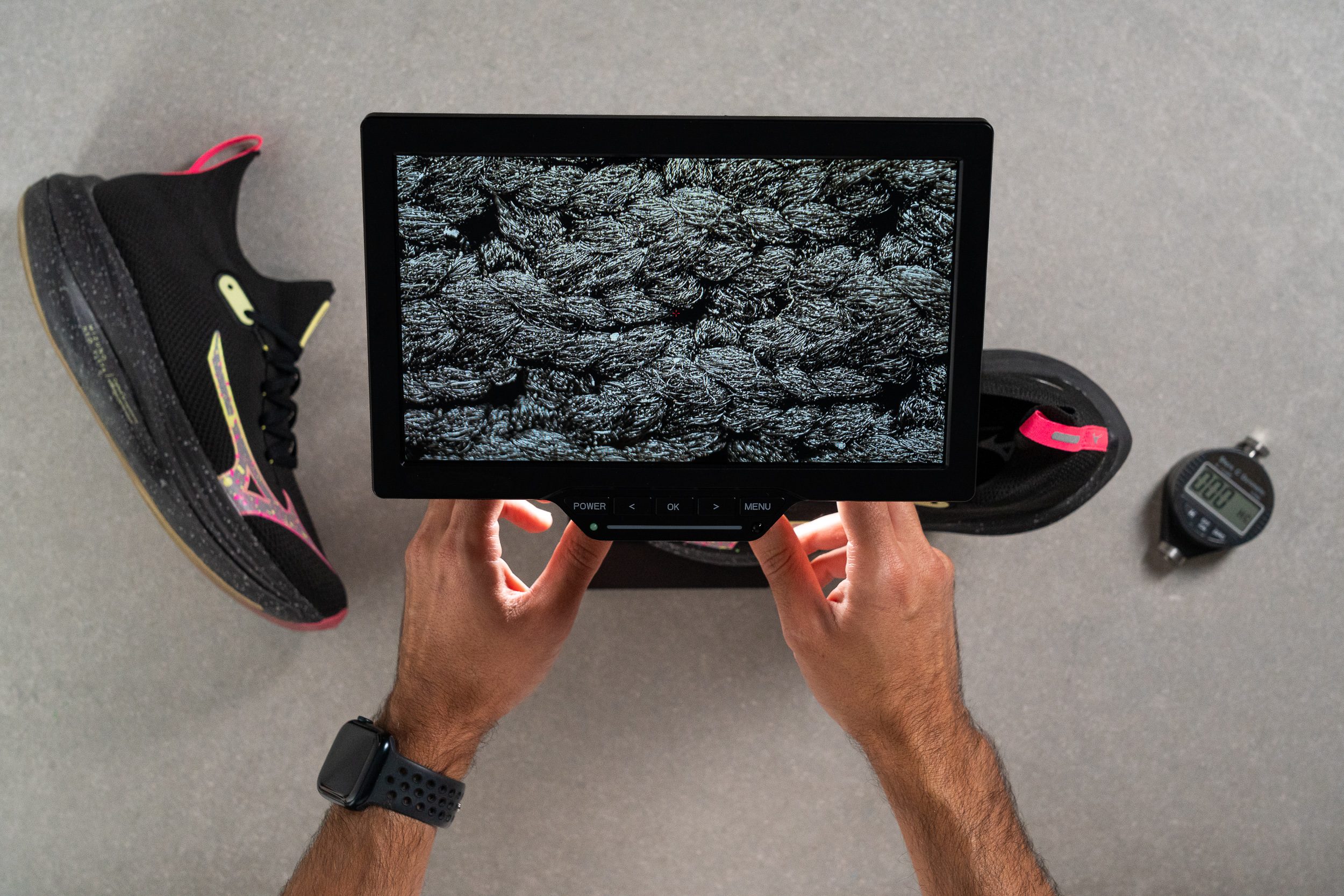
Using a microscope, we saw that the thick, snug knit upper restricts airflow significantly.
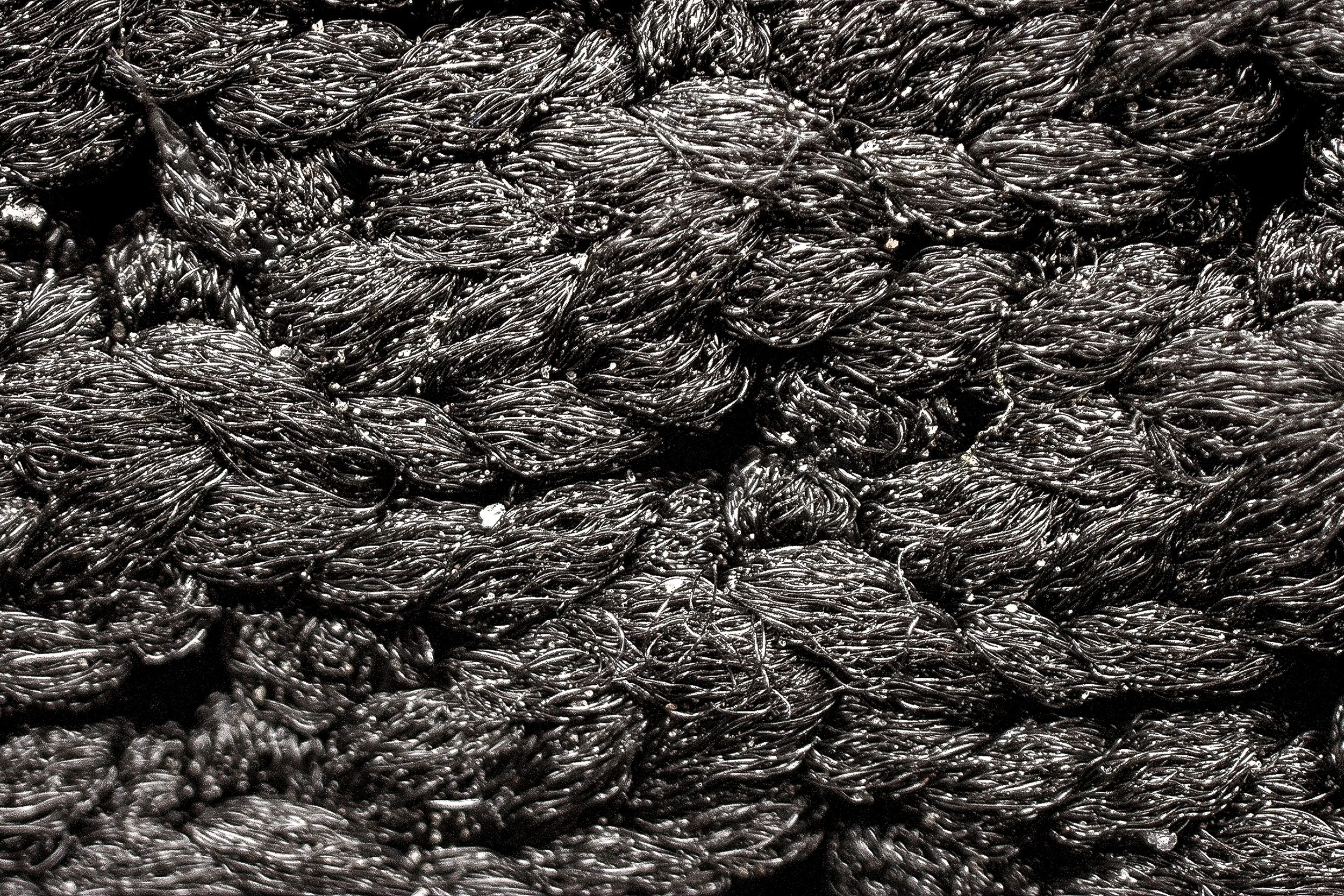
Unfortunately, we can't recommend wearing this shoe sockless because the rough stitching in the Achilles tendon area caused significant irritation to our feet. However, the rest of the upper is comfortable and performs well.
We think that for those who prioritise comfort over a cooler feel, the Neo Vista excels. It's cosy, stretchy, and provides solid lockdown, and we believe it will prove durable over time.
| Neo Vista | 3 |
| Average | 3.7 |
Stability
Lateral stability test
The Neo Vista is a neutral running shoe that presents a paradox in stability. Initially, its soft foam feels really unstable when starting every run, yet Mizuno has integrated several design adjustments to enhance stability and it gets better the more you run with them. Let’s explore why.
Torsional rigidity
The Neo Vista features a nylon plate sandwiched between two layers of foam purely for stability.
This design choice is essential, as the shoe's super-soft, over-40-mm midsole would lead to significant instability without it. The plate significantly enhances torsional rigidity, achieving a 4/5 on our scale.
| Neo Vista | 4 |
| Average | 3.5 |
Heel counter stiffness
The heel counter of the shoe, typical of sock-like uppers, flexes without resistance, scoring a low 1 out of 5 in our tests.
In our view, this area presents an opportunity for enhancement—heel strikers, particularly those with stability needs, would greatly benefit from a more supportive heel, especially considering the shoe's plush foam construction.
| Neo Vista | 1 |
| Average | 2.9 |
Midsole width - forefoot
The improved stability we experienced in the Neo Vista is largely due to its midsole design.
Mizuno ingeniously crafted the midsole by hollowing out the bottom half and broadening the sides, thus expanding its width to a substantial 120.8 mm without adding weight. This clever design choice significantly enhances stability without the burden of extra mass.
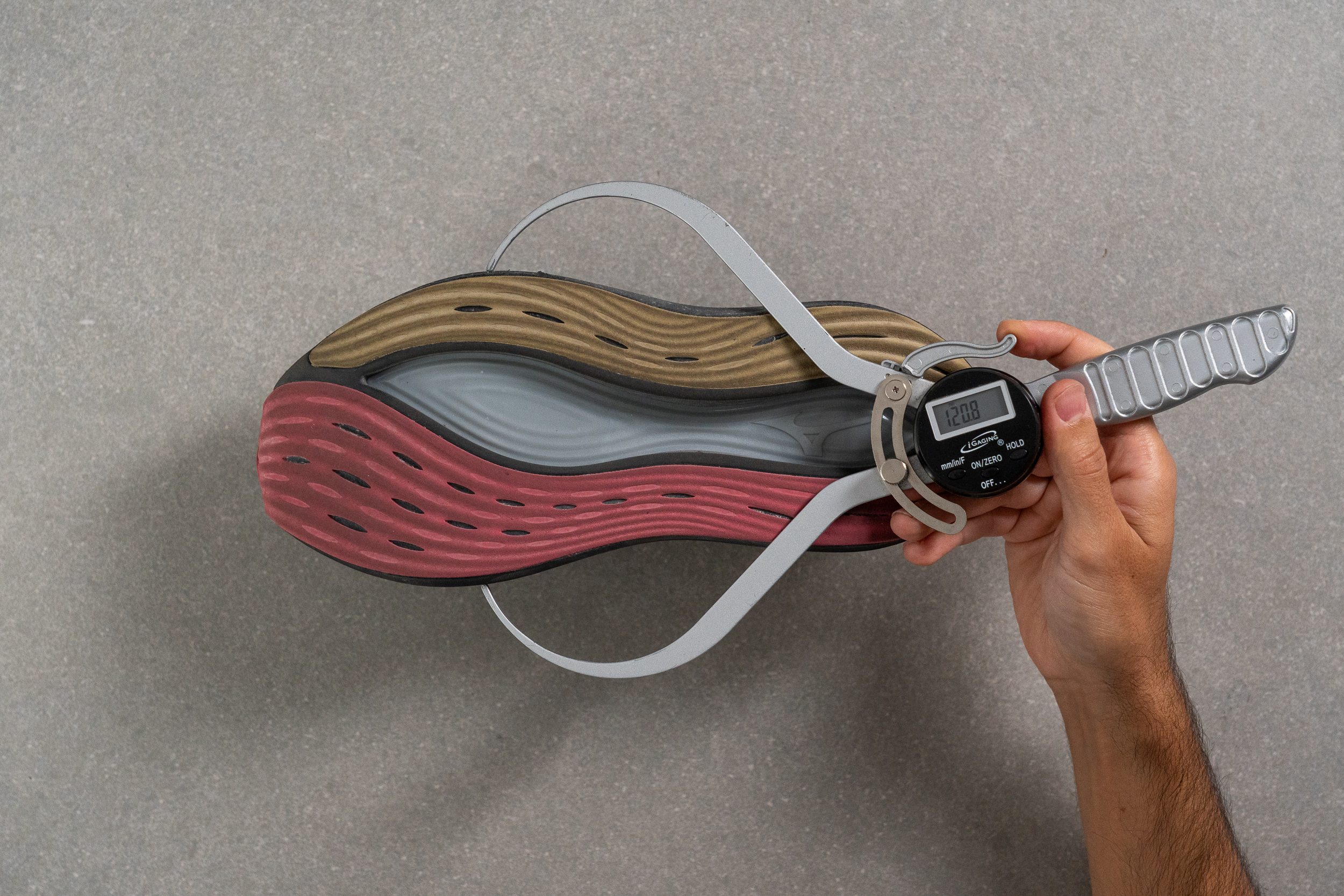
| Neo Vista | 120.8 mm |
| Average | 114.4 mm |
Midsole width - heel
The central void of the Neo Vista extends from the forefoot to the heel, increasing the heel width to 97.9 mm, comparable to stability shoes.
While this might make the Neo Vista feel overly large, it's mandatory. The incredibly soft foam requires a wider profile for effective stability.
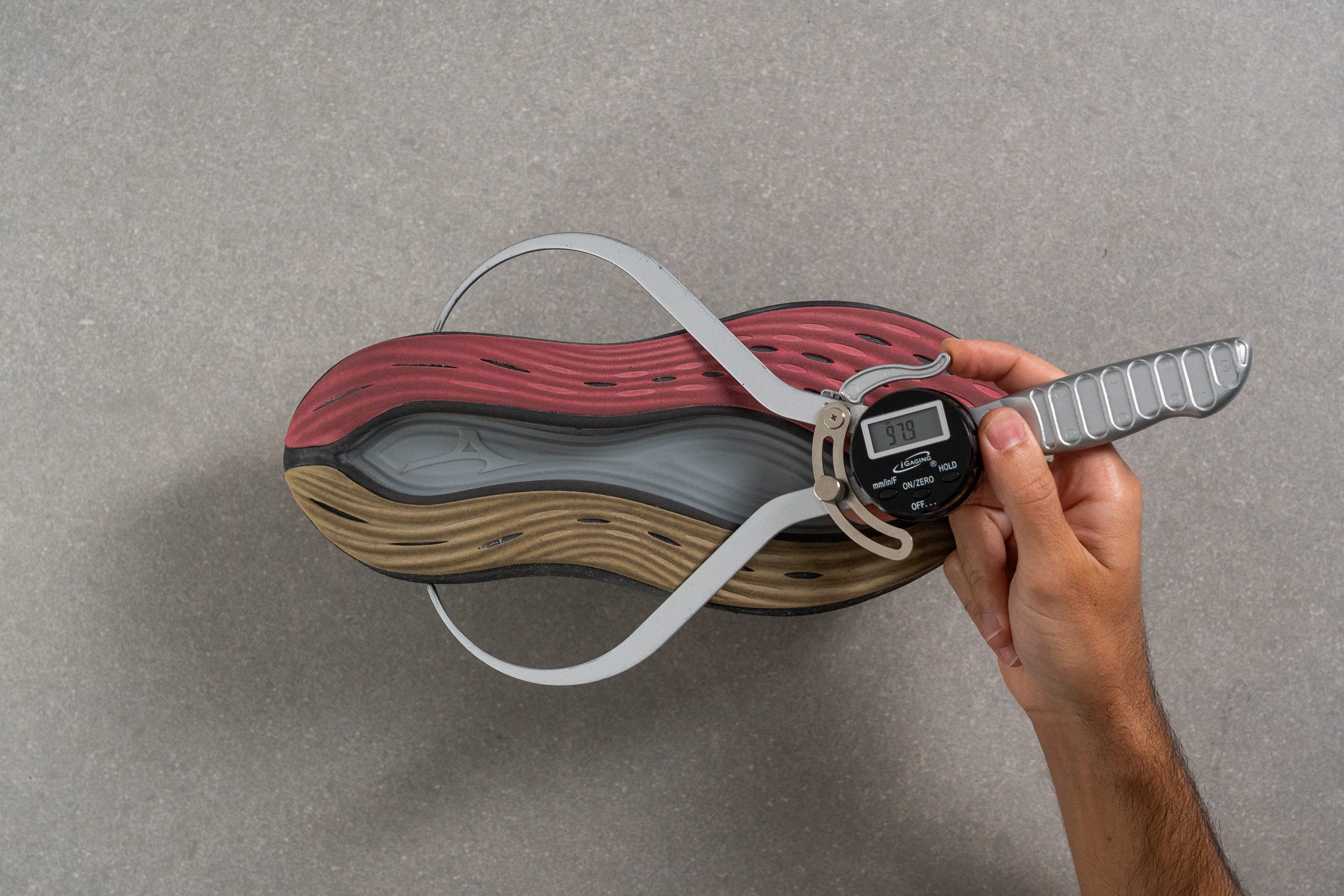
| Neo Vista | 97.9 mm |
| Average | 90.7 mm |
Durability
Toebox durability
Another significant drawback of most knit uppers is their limited durability; however, the Neo Vista's material performed exceptionally well against our Dremel test, achieving an impressive 4/5 rating.
While the tool did cause some damage to the toebox, it didn't create a full hole—a rare feat for a knit upper. We believe this is a very positive result, indicating strong durability.
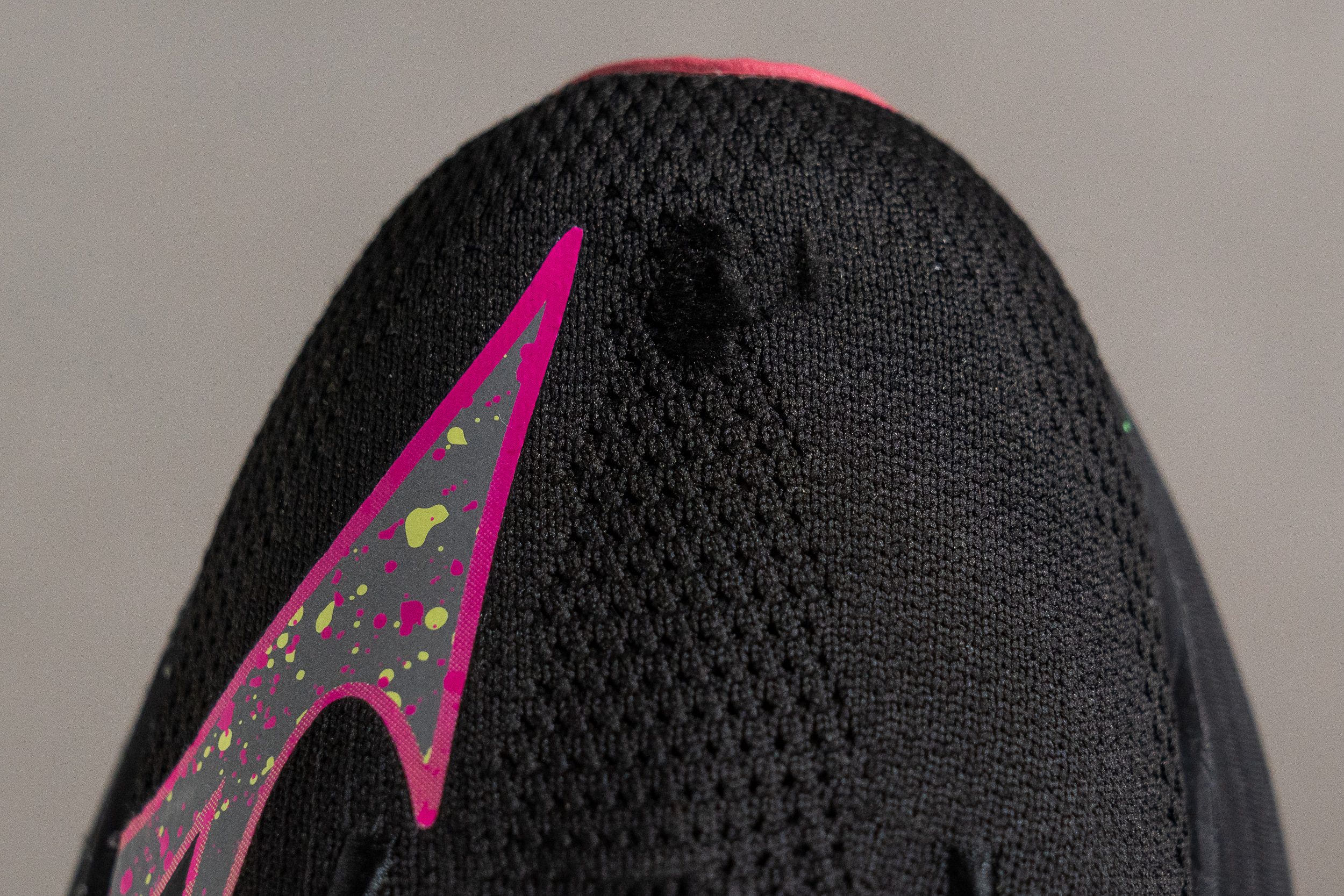
| Neo Vista | 4 |
| Average | 2.6 |
Heel padding durability
The entire upper of the Neo Vista is made from the same durable material, yet enhanced by a small reinforcement pad at the heel. This addition is key, as in our second Dremel test, this shoe scored another impressive 4 out of 5.
For those who often experience wear in the toebox and heel, the Neo Vista proves to be a reliable choice, delivering enhanced durability where it's needed most. However, as we mentioned earlier, the reinforcement Mizuno added in the heel can cause some irritation for those going sockless or even using invisible socks.

| Neo Vista | 4 |
| Average | 3.4 |
Outsole hardness
Encouraged by two successful initial tests, we focused next on the outsole of the shoe. We started by measuring its hardness, registering 69.3 HC on our durometer.

This lower hardness might suggest reduced durability but, as our Dremel test showed, that's not the case at all!
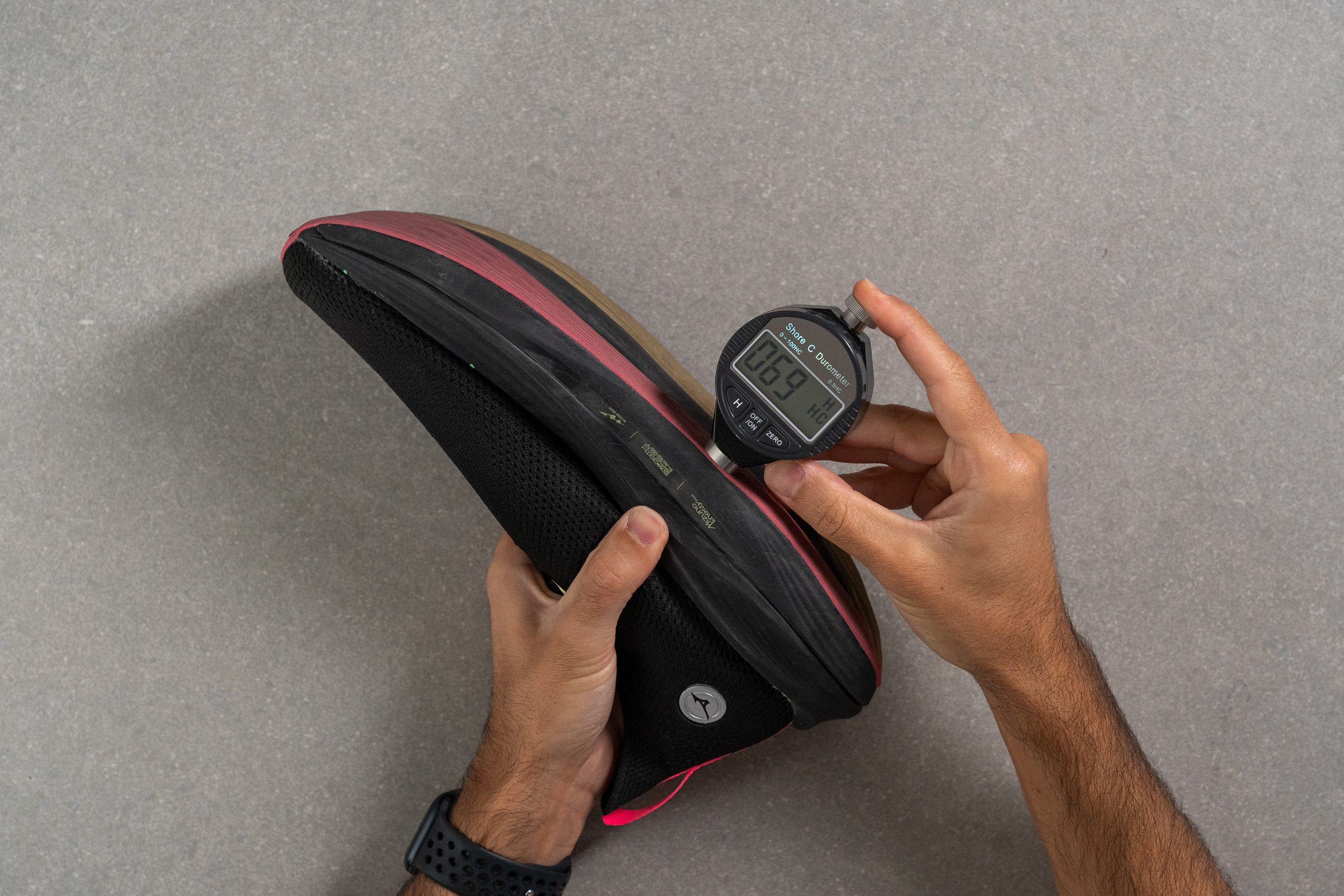
| Neo Vista | 69.3 HC |
| Average | 79.2 HC |
Outsole durability
To our surprise, the Dremel test performed on the outsole resulted in only a 0.4 mm indentation. That's an excellent result!
For this reason, we highly endorse the Neo Vista as one of the most durable high-performance trainer available. It’s designed to resist wear not just on the upper but also on the outsole, which also benefits from full-length rubber coverage.
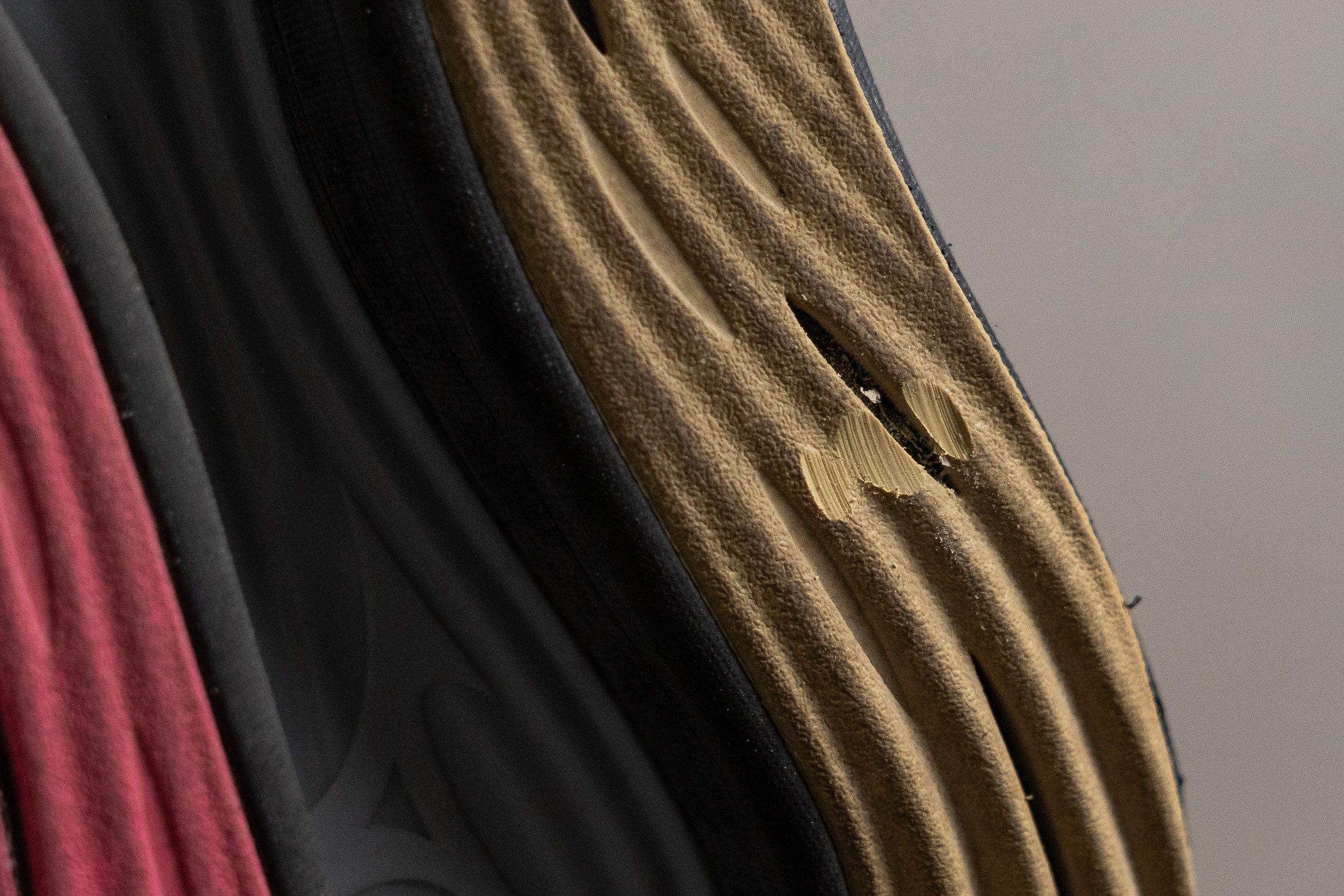
| Neo Vista | 0.4 mm |
| Average | 1.1 mm |
Outsole thickness
In their quest to reduce the weight of such a large shoe, Mizuno has slimmed down the usual thickness found in running shoes to just 2.1 mm. However, given the good abrasion resistance previously displayed, this seems like a wise choice to us.
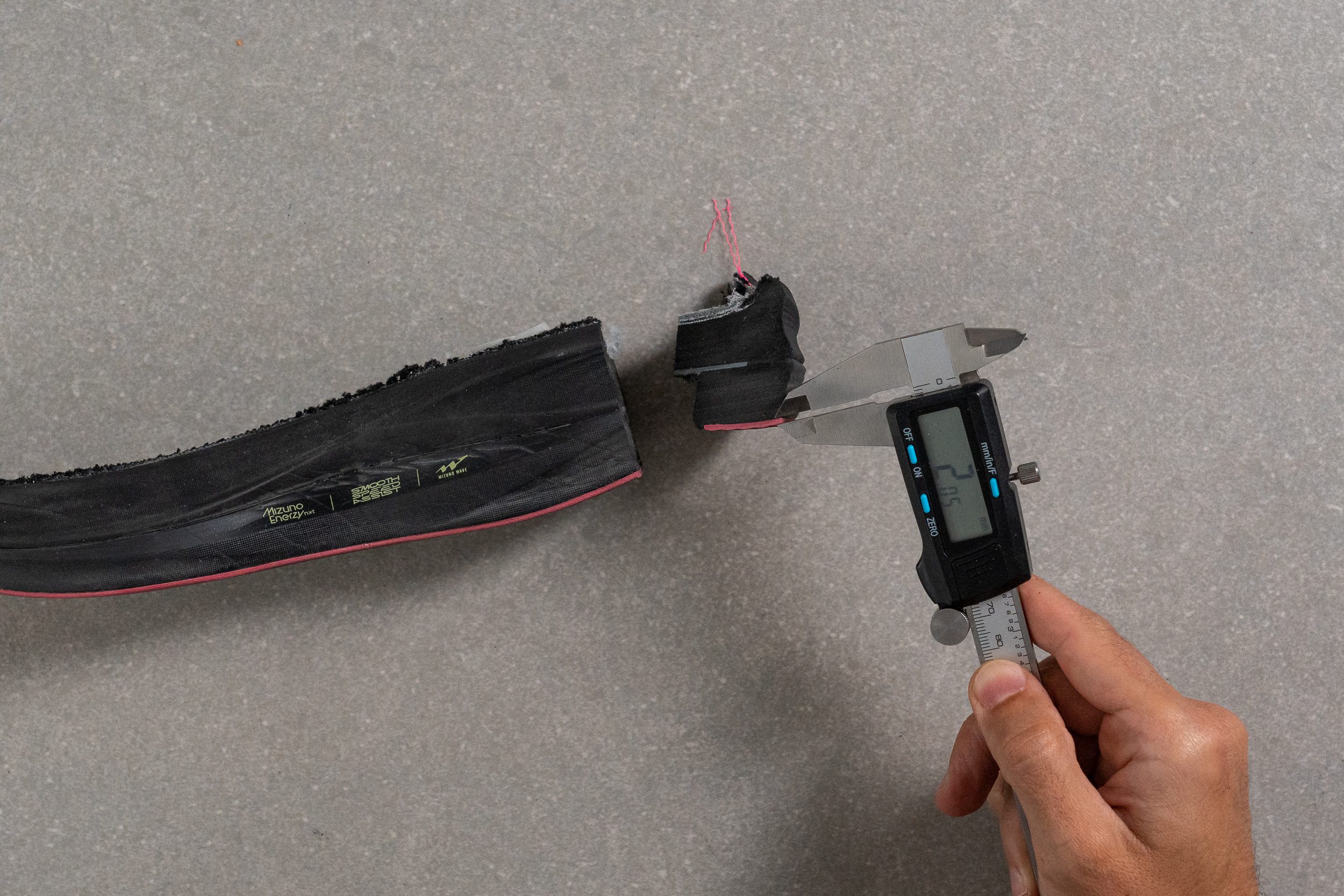
| Neo Vista | 2.1 mm |
| Average | 3.2 mm |
Misc
Insole thickness
The Neo Vista is packed with funny and weird features alike, yet the insole remains the most ordinary and unremarkable part of the entire shoe. At 4.8 mm and made from EVA, it's basically the same insole that we've found in countless other running shoes!
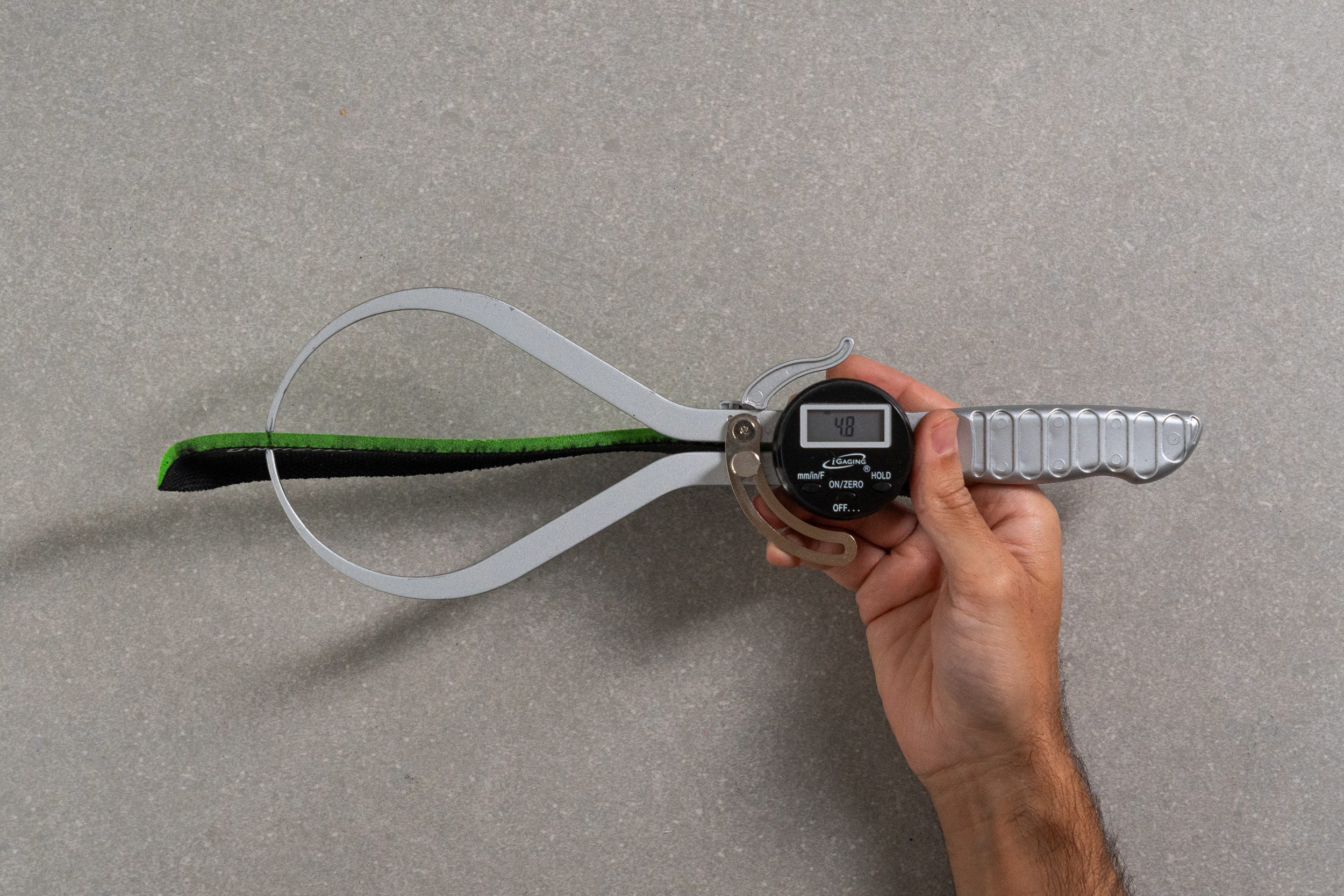
| Neo Vista | 4.8 mm |
| Average | 4.5 mm |
Removable insole
In our lab, we easily removed the insole and swapped it with other options, allowing for additional space by using a thinner sockliner. Given the extensive cushioning of this shoe, you won't feel the change to a slender footbed, but you could appreciate the extra volume up front.
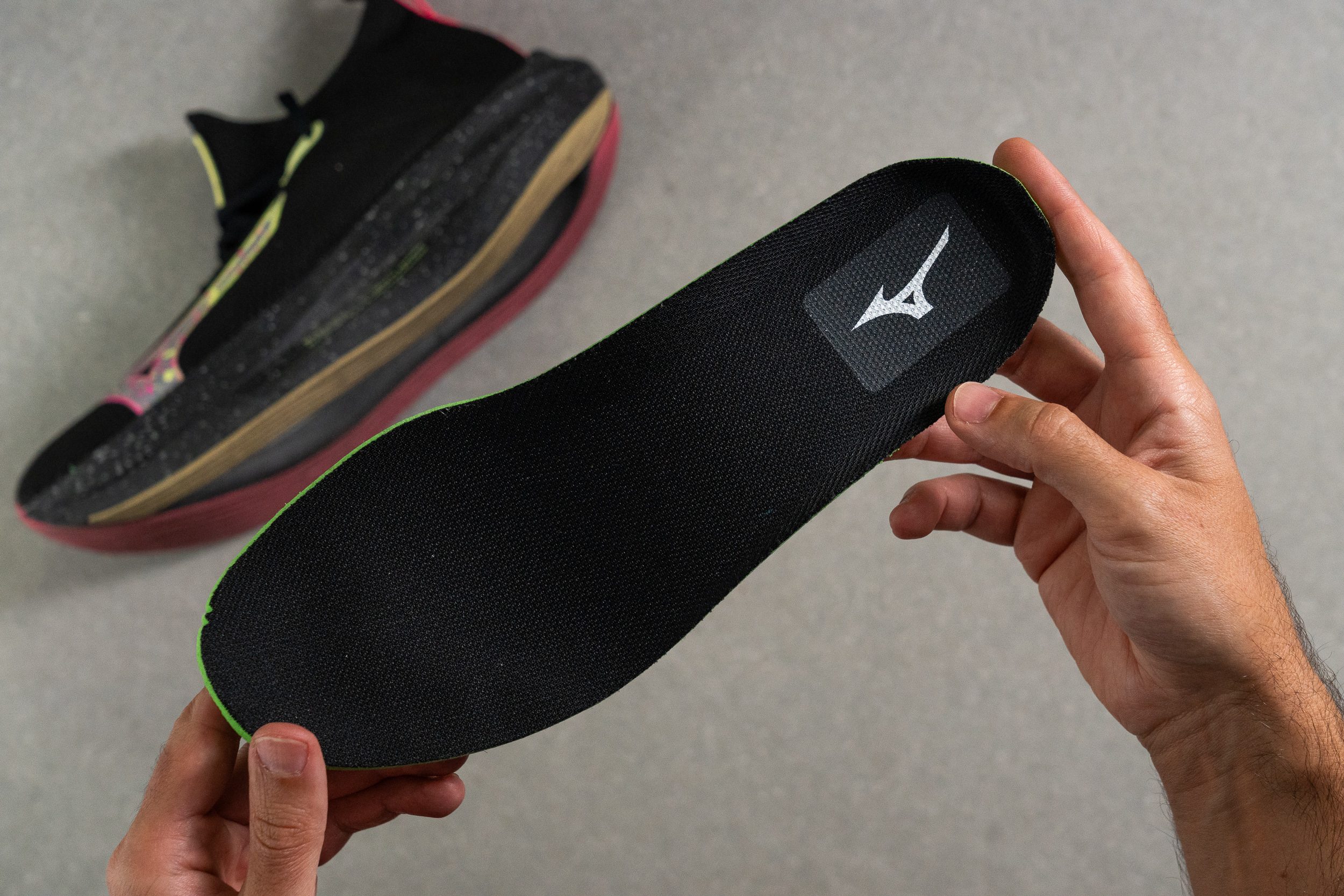
| Neo Vista | Yes |
Midsole softness in cold (%)
Mizuno's new formulation significantly enhances the classic EVA foam's performance in cold temperatures. After a 20-minute test in our freezer, the foam only became 12.6% firmer—a remarkable result.

| Neo Vista | 13% |
| Average | 24% |
Reflective elements
We always appreciate reflective elements in running shoes for the added safety and minimal weight impact. Mizuno has mastered this with the Neo Vista, enhancing visibility and boosting brand recognition through its standout reflectivity.
| Neo Vista | Yes |
Tongue padding
A common feature of sock-like uppers is their thin tongues, and the Neo Vista is no exception.
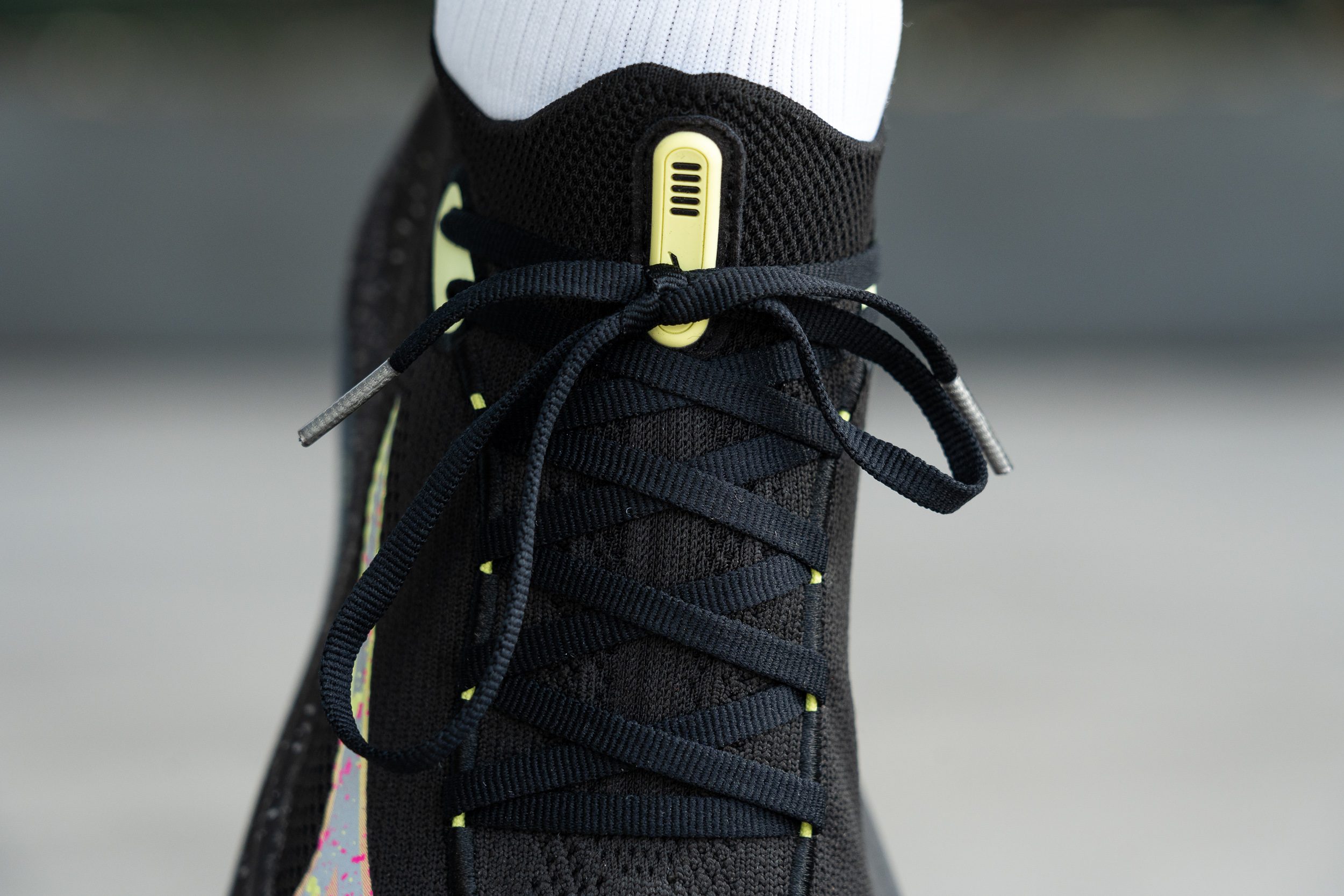
We measured just 1.9 mm of padding, but while the knit is plush and comfortable, it doesn’t compare to a 10-mm tongue. For this reason, be cautious when tightening the laces, especially since sock-like uppers often provide a snug fit right out of the box.

| Neo Vista | 1.9 mm |
| Average | 5.8 mm |
Tongue: gusset type
Fans of the Alphafly 3 will discover that the Neo Vista is the ideal training companion, not only for its thrilling ride but particularly for its sock-like, tongueless upper. This design snugly wraps the foot and ensures a secure lockdown. However, it may not suit those who prefer shoes with traditional tongues.

| Neo Vista | Sock like |
Price
The Neo Vista is priced higher than most running shoes, but when compared to other supertrainers, the price tag seems reasonable to us, even lower than some competitors.
And yes, we think it is a lot of money for a running shoe. However, it offers unmatched fun and cushioning, setting it apart in the market.
| Neo Vista | $180 |
Heel tab
Mizuno has added a durable finger-loop heel tab to the shoe, which is incredibly sturdy and unlikely to break throughout the shoe's lifespan. And hey, you can't deny that the black colorway we purchased pairs excellently with the striking pink contrast from the tab!

| Neo Vista | Finger loop |

